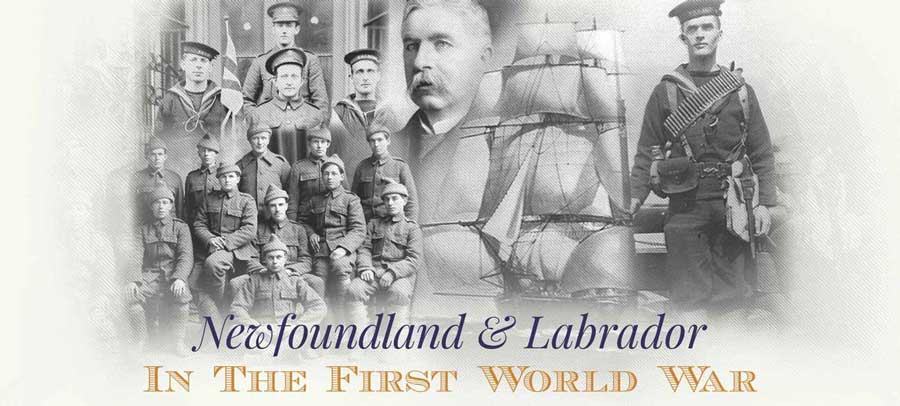'For King and Country'
Stanley I. Hillier and the Newfoundland Royal Naval Reserve
[This Web page has been reproduced by permission of Darrell Hillier. ]
The Newfoundland Royal Naval Reserve (RNR) was formed in 1902 through the combined efforts of Newfoundland and Great Britain. In September of that year HMS Calypso was commissioned at Devonport for service in Newfoundland as depot and drill ship for the RNR. Designed by Nathaniel Barnaby and launched at Chatham, England, in 1883, she was the last of the steam and sail class corvette. With a protective deck and steel hull cased in teak and oak, Calypso was perhaps the most successful of Victorian era cruising ship built for the Royal Navy.
Initially, the British Admiralty intended to moor Calypso at Argentia so "that the men would be less liable to temptation than if the vessel were moored near the city." Governor Sir Cavendish Boyle intimated, however, that citizens and Calypso's crew would appreciate "the presence of the ship... in the waters of the principal harbour." Upon arrival in St. John's early in October 1902, Calypso was moored adjacent the Reid Newfoundland Company wharf and her decked roofed over [sic.] to form a drill hall; drilling commenced under the command of Frederick M. Walker. Normally performed during winter months when the fishing season had ended, drilling involved gunnery instruction, fire station exercises, regular inspections, and physical training using rifles and dumbbells; optional reading and writing classes were offered every evening as well.
Prior to 1914, acceptance to the Newfoundland RNR required that candidates be seamen or fishermen between the ages of eighteen and thirty. All men enrolled for five years and completed twenty-eight days' drill annually. Drawing on Newfoundland's core of experienced seamen, reserve ranks reached 375 men by late 1903. Each year thereafter until the declaration of war in August 1914, the Reserve maintained a nominal strength between five and six hundred men. At the outbreak of World War One 75 percent of Newfoundland's reservists were classified as qualified seamen, having trained at sea, passed an elementary examination in gunnery and seamanship, and been recommended by the Commanding Officer.
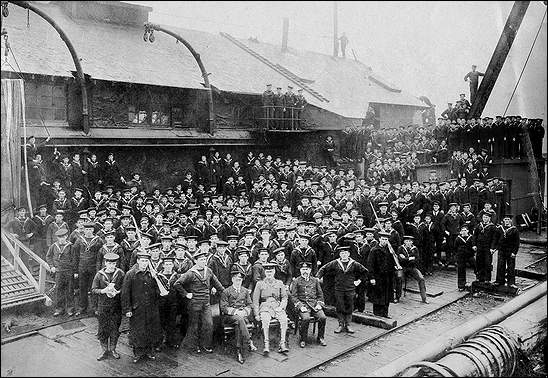
Courtesy of Darrell Hillier, St. John's, NL.
In November 1914, Newfoundland Governor Sir Walter Davidson issued a proclamation calling for sufficient volunteers to bring RNR strength to one thousand men. To hasten enlistment the Admiralty "practically abolished [the] physical measurement qualifications," raised the maximum age of entry to thirty-five, and granted admission to men with little or no nautical experience. By April 1915, Davidson's appeal was realized as RNR strength reached 1,036 men. On entry, each man was issued a free kit and clothing which they maintained at their own expense. Medicals were compulsory, the most common cause of rejection was defective teeth and vision. In February 1916, the Navy changed Calypso's name to Briton and transferred the original title to a newly commissioned British warship.
In April 1916, Stanley Isaac Hillier, aged nineteen, left his hometown of High Beach on Newfoundland's Burin Peninsula, presented himself on board HMS Briton (formerly Calypso) and dutifully enlisted in the Royal Naval Reserve as reservist number 2083X. Now a "wearer of the blue," he commenced drilling under Newfoundland's Senior Naval Officer, Commander Anthony McDermott, Royal Navy. Although normally completed in twenty-eight days, RNR records suggest that most trainees on HMS Briton in mid 1916 drilled for shorter periods; indeed, Stanley Hillier's drilling lasted only five days. During that time he fired ten rounds of ammunition on the rifle and fifteen on the Morris Tube, a false barrel or inner tube fitted into the bore of a larger rifle to decrease its bore size. This practically eliminated recoil and allowed the weapon to fire low-power ammunition. Used primarily for practice, the tube reduced the gun's range and therefore danger area, and lowered the cost of ammunition.
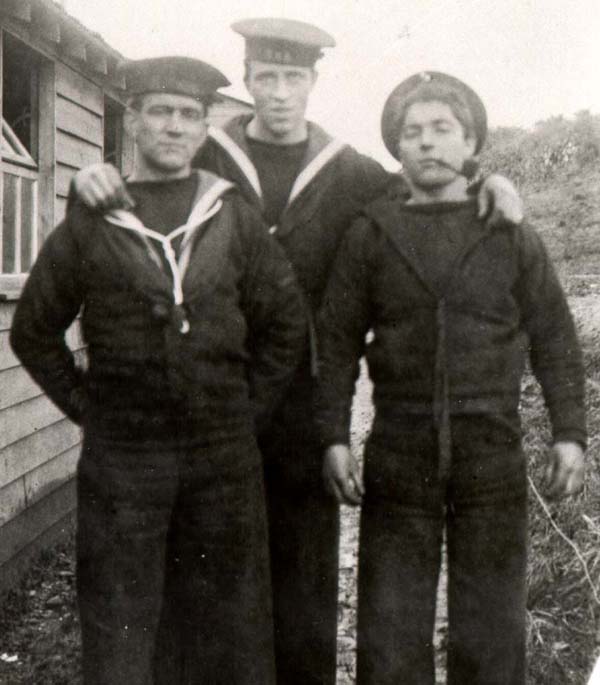
Courtesy of Darrell Hillier, St. John's, NL.
HMS Briton's reservists were tasked with a number of home-front defence duties. They provided an armed piquet for the Admiralty's wireless station at nearby Mount Pearl, a site Stanley Hillier visited several times in mid-1916 (but not in the capacity of Guard). Reservists also manned the harbour's main defence battery at Fort Waldegrave. Abandoned around 1870, the Fort was reactivated in June-July 1916 and manned by members of the Newfoundland Legion of Frontiersmen; the RNR maintained a 12-pounder gun there to protect the harbour entrance.
From July 24 to 26, 1916, Chief Petty Officer Weir escorted Reservists Hillier, Payne, and Smith to the Fort, usually arriving in the morning and returning to quarters on board HMS Briton in the afternoon. The log of HMS Fort Waldegrave (shore establishments also used the appellation "HMS") indicates that these men were likely performing basic maintenance duties on the recently reactivated building and grounds. Douglas Payne and William Smith would later ship out with Stanley Hillier. No doubt becoming good friends, he kept a photo of each man for many years after.
On August 28, 1916, Stanley Hillier, along with twenty-six fellow reservists and 240 men of the Newfoundland Regiment, boarded the passenger liner SS Sicilian. At exactly 12:10 p.m. local time, they sailed past Fort Waldegrave and through the "Narrows" of St. John's harbour, bound for Devonport, England. Once off the coast Sicilian was met by an armed escort and continued her journey in a convoy of some thirty ships. Steaming at an average speed of eleven knots she arrived at Devonport naval base twelve days later.
At Devonport naval barracks (HMS Vivid) Stanley Hillier started gunnery instruction and early in November 1916, was drafted to the battle cruiser HMS New Zealand at Rosyth Naval Base, Scotland. One of four ships to make up the First Battle Cruiser Squadron, New Zealand (paid for and donated by the Dominion for which she was named) had by then distinguished herself in such engagements as Heligoland, August 1914, Dogger Bank, January 1915, and Jutland, May 1916. Now a member of her eight-hundred-men complement, (and to his knowledge the only Newfoundlander on board) Reservist Hillier routinely sailed from Rosyth, and later Scapa Flow in the Orkney Islands, waiting for the German High Seas fleet to come out after its defeat at Jutland. Only after Germany's surrender in 1918 did the fleet finally reappear.
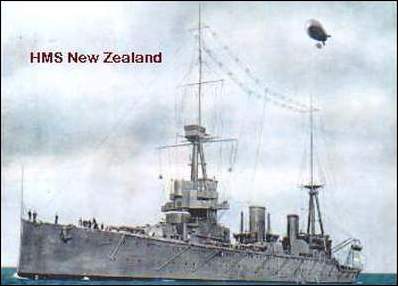
Courtesy of Darrell Hillier, St. John's, NL.
In November 1917, the British Admiralty focused attention on the sea lanes of Heligoland Bight, Germany, where intelligence suggested that the enemy was carrying out a large sweeping operation. The Admiralty was now intent on striking German forces a serious blow. Naval historian Henry Newbolt explained that on the morning of November 17, the First Battle Cruiser Squadron, reinforced by HMS New Zealand, was to "sweep across the North Sea to a point about half-way across the outer edge of the quadrant of mines in the Heligoland Bight. They were to approach this point from the western and southern sides of the large German minefield in the central part of the North Sea, and having reached it, were to sweep to the NNW."
Action began at 0730 hours [7:30 a.m.] in the morning of November 17, when Royal Navy ships encountered enemy forces comprising minesweepers, submarines, destroyers, and light cruisers. Shortly after 0100 [1:00 a.m.] hours, Royal Navy forces, aided by a dense fog, withdrew safely across the North Sea. The action was confused by the presence of minefields and smoke screens and in the end the damaged inflicted upon German forces was minimal.
Late February 1918, after sixteen months service on HMS New Zealand, Stanley Hillier was granted leave to return to Newfoundland. Colonial records indicate that on March 9, he and twenty fellow reservists departed Halifax, Nova Scotia, for Port Aux Basques, Newfoundland, where he boarded the Express train for St. John's. It is possible that he was among the thirty-five reservists welcomed at the St. John's railway station six days later by the Ladies Reception Committee and Newfoundland Prime Minister William Lloyd.
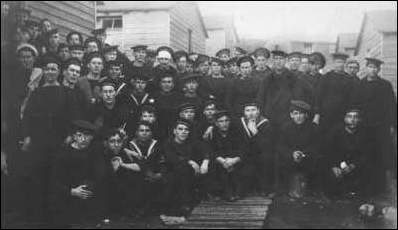
Courtesy of Darrell Hillier, St. John's, NL.
In May 1918, Stanley Hillier was drafted back to Devonport barracks where he completed a gunnery course for armed merchant ships. From September 1918 to January 1919, he was assigned to HMS President III, accounting base for Defensively Armed Merchant Ship (DAMS) personnel. Now with the sub-rating of seaman gunner, Stanley Hillier was drafted to Halifax, Nova Scotia, and placed on a merchant ship. While en route to Montreal for war supplies the Armistice was signed and the Great War came to a close. On arrival at Montreal the ship was loaded with food instead of war supplies and proceeded to Hull, England, where Stanley Hillier would spend Christmas 1918. In January 1919, he was drafted to Whitloe Camp, Cornwall, to await passage home. Reservist Hillier arrived at St. John's in February and was demobilized to shore on April 10, 1919, almost three years to the day of his enlistment.
By war's end in November 1918, Newfoundland RNR strength approached two thousand men. During the course of hostilities some 180 Newfoundlanders were lost in action. Total Royal Navy losses, Colonial reserves included, were set at about thirty-five thousand men. Demobilization of Newfoundland reservists was completed by 1921 and the naval reserve disbanded. Later, HMS Briton's former Commanding Officer, Anthony McDermott, paid tribute to the men under his command when he stated: "Newfoundlanders took to naval life and routine like ducks to water... Their conduct was uniformly exemplary, punishments were practically unknown, and every order was carried out with cheerful alacrity and seamanlike intelligence... I may say, indeed, that there were no smarter-looking men in the whole service."
A Note on Research Materials
Unlike, for example, the Royal Newfoundland Regiment, members of the Newfoundland Royal Naval Reserve were not kept together as a distinct fighting unit. Therefore there exists no definitive record (i.e., battle diary) of the World War One operational activities of both the Reserve and its members. This presents a problem when tracing the history of an individual seaman. Listed below are some sources that researchers may find useful.
Bibliography
Provincial Archives of Newfoundland and Labrador, Colonial Building, St. John's:
GN 2/14, Department of the Colonial Secretary, World War One files
GN 2/5, Colonial Secretary's Special Files
GN 1/10/0, War Papers
GN 1/10/1, Newfoundland Royal Naval Reserve
GN 1/3/A, Governor's Miscellaneous and Local Correspondence, 1915-1919
MG 562, Box 1, Log of HMS Fort Waldegrave, 1916-17
MG 562, Box 3, Reports, Day and Night Guard, HMS Fort Waldegrave, June-July 1916,
Sept. 1917
Maritime History Archive, Memorial University of Newfoundland, St. John's:
R93-9/A, Newfoundland RNR, Deck Logs HMS Briton, 1912-14, 1919-20, 1922
R-93-9/B, Drill Register, Newfoundland RNR, HMS Calypso, 1903-13, 1913-14
R93-9/C, Index of trainees, Register of Trainees (1914-16), Newfoundland RNR Wine Book,
Day Books (1919-22)
Newspapers:
Daily News (St. John's)
Evening Telegram (St. John's)
Western Star (Corner Brook)
Books/Articles:
Newbolt, Henry. History of the Great War, Naval Operations. Vol. V. London: Longmans, Green and Co., 1931.
Ransom, Bernard. "A Nursery of Fighting Seaman? The Newfoundland Royal Naval Reserve, 1901-1920." A Nation's Navy: In Quest of Canadian Naval Identity. Eds. Michael L. Hadley, Rob Huebert and Fred W. Crickard. Montreal, Kingston: McGill-Queen's University Press, 1996.
Miscellaneous:
Ministry of Defence, Great Britain
Personal photographs and papers of Stanley I. Hillier
Special thanks to Steve Johnson for explaining the workings of a Morris Tube
Darrell Hillier can be contacted by email at rnr2083x@yahoo.ca.
